Prof. Dr. Daniel Schwemer from the University of Würzburg in Germany, reports that he identifies this language as the language of the country of Kalaşma, located on the northwestern edge of the Hittite central region, probably in the modern Bolu or Gerede region.
A new Indo-European language was reportedly discovered during archaeological excavations in the Boğazkale district of Çorum, home to the Hittite capital Hattusa, a UNESCO World Cultural Heritage site.
In the written statement of Çorum Provincial Directorate of Culture and Tourism, it was reminded that Boğazköy-Hattusa in the northern part of Central Anatolia is home to the capital of the Hittite Empire, one of the greatest powers of the Near East Late Bronze Age.
The statement said that approximately 30 thousand clay tablets written in cuneiform script have been found so far in Hattusa, where excavations have been ongoing for more than 100 years, and emphasized that these tablets, which have been registered as part of the UNESCO Memory of the World List since 2001, provide rich information about the history, society, economy and most importantly religious traditions of the Hittites and their neighbors.
In the statement, it was explained that new cuneiform finds continue to be added to the cuneiform finds in the archaeological works carried out under the direction of Prof. Dr. Andreas Schachner from the İstanbul Branch of the German Archaeological Institute:
"Most of the texts were written in Hittite, the oldest proven Indo-European language and the dominant language in the region, but this year's excavations yielded an unexpected surprise. Hidden inside a cult ritual text written in Hittite was a reading text written in a hitherto unknown language. The excavation epigraphist, Prof. Dr. Daniel Schwemer from the University of Würzburg in Germany, reports that he identifies this language as the language of the country of Kalaşma, located on the northwestern edge of the Hittite central region, probably in the modern Bolu or Gerede region.
The discovery of another language in the Boğazköy-Hattusa archives is not entirely unexpected. According to Prof. Schwemer, the Hittites had a unique interest in recording rituals in foreign languages. The ritual texts written by the Hittite king's scribes reflect the diverse Anatolian, Syrian, and Mesopotamian traditions and linguistic environments. They offer valuable insights into the little-known linguistic geography of Late Bronze Age Anatolia, where not only Hittite was spoken. Indeed, the cuneiform texts from Boğazköy-Hattusa contain passages from two other Anatolian-Indo-European languages closely related to Hittite, Luwian, and Palaic, as well as a non-Indo-European language, Hattian. Kalaşma may now be added to these."
The text is still largely unintelligible
Pointing out that the text in the Kalaşma language, written in a newly discovered language, is still largely unintelligible, the statement said:
"Schwemer's colleague Prof. Dr. Elisabeth Rieken, an expert on ancient Anatolian languages, confirmed that this new language belongs to the Anatolian-Indo-European family of languages. According to Rieken, despite its geographical proximity to the region where Palaic is spoken, this text seems to share more linguistic features with Luwian. How closely Kalaşma is related to other Luwian dialects in Late Bronze Age Anatolia will be the subject of further research. The interdisciplinary work at Boğazköy-Hattusa is a project funded by the German Archaeological Institute (DAI), the Thyssen Foundation, the GRH Foundation, the Volkswagen Foundation, and the Italian Ministry of Foreign Affairs. Scientists from the DAI, Istanbul, the University of Würzburg, and the University of Marburg are working together on the documentation and evaluation of the text."
Reporter: Tugay Göktürk - anatolian agency (Translated into english by arkeolojikhaber)

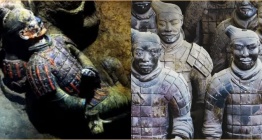


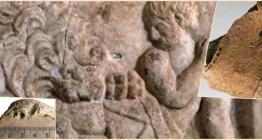



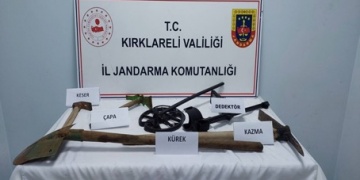 Kırklareli merkezli 3 ilde kaçak kazı operasyonunda 14 defineci yakalandı
Kırklareli merkezli 3 ilde kaçak kazı operasyonunda 14 defineci yakalandı 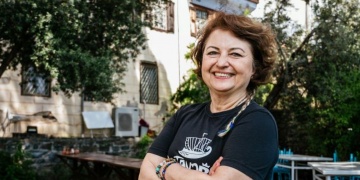 Antandros Antik Fest 16 Mayıs'ta arkeoloji, tarih ve kültür dostlarını bekliyor
Antandros Antik Fest 16 Mayıs'ta arkeoloji, tarih ve kültür dostlarını bekliyor 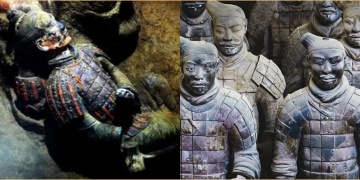 Terrakotta Ordusu'na orijinal boyaları korunmuş yeni savaşçı heykelleri katıldı
Terrakotta Ordusu'na orijinal boyaları korunmuş yeni savaşçı heykelleri katıldı 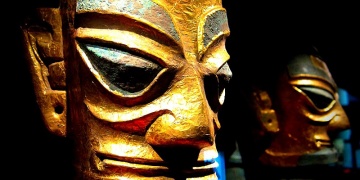 Çinli arkeologlar Shu uygarlığına ait altın maskeler ve bronz eserler buldular
Çinli arkeologlar Shu uygarlığına ait altın maskeler ve bronz eserler buldular 




